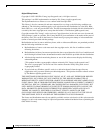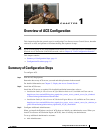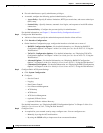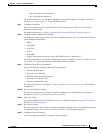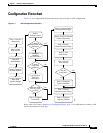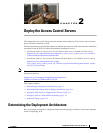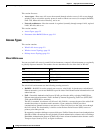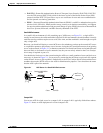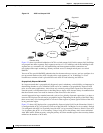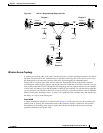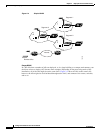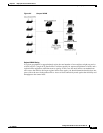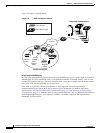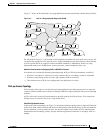
2-2
Configuration Guide for Cisco Secure ACS 4.2
OL-14390-02
Chapter 2 Deploy the Access Control Servers
Determining the Deployment Architecture
This section discusses:
• Access types—How users will access the network (through wireless access, LAN access through
switches, and so on) and the security protocols used to control user access; for example, RADIUS,
EAP- TLS, Microsoft Active Directory, and so on.
• Network architecture—How the network is organized (centrally through campus LANs, regional
LANs, WLANs, and so on.
This section contains:
• Access Types, page 2-2
• Placement of the RADIUS Server, page 2-11
Access Types
This section contains:
• Wired LAN Access, page 2-2
• Wireless Access Topology, page 2-5
• Dial-up Access Topology, page 2-9
Wired LAN Access
You can use wired LAN access in a small LAN environment, a campus LAN environment, or a regionally
or globally dispersed network. The number of users determines the size of the LAN or WLAN:
The wired LAN environment uses the following security protocols:
• RADIUS—RADIUS is used to control user access to wired LANs. In broadcast or switch-based
Ethernet networks, you can use RADIUS to provide virtual LAN identification information for each
authorized user.
• EAP—Extensible Authentication Protocol (EAP), provides the ability to deploy RADIUS into
Ethernet network environments. EAP is defined by Internet Engineering Task Force (IETF) RFC
2284 and the IEEE 802.1x standards.
The 802.1x standard, also known as EAP over LAN (EAPoL), concerns the part of the wider EAP
standard that relates to broadcast media networks. Upon connection, EAPoL provides a
communications channel between an end user on a client LAN device to the AAA server through
the LAN switch. The functionality is similar to what Point-to-Point Protocol (PPP) servers on
point-to-point links provide.
By supporting complex challenge-response dialogues, EAP facilitates the user-based authentication
demands of both conventional one-way hashed password authentication schemes such as Challenge
Handshake Authentication Protocol (CHAP) and of more advanced authentication schemes such as
Transport Layer Security (TLS), or digital certificates.
Size Users
small LAN 1 to 3,000
medium-sized LAN 3,000 to 25,000
large LAN 25,000 to 50,000
very large LAN or WLAN over 50,000



